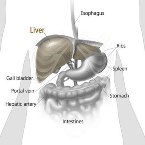Scientists take a step closer to grow human organs in a lab
 A new step in the science of physiology has been taken by the scientists as they have developed a structure that can support beating heart muscle, which brightens the possibility that human organs could be grown in the laboratory in near future.
A new step in the science of physiology has been taken by the scientists as they have developed a structure that can support beating heart muscle, which brightens the possibility that human organs could be grown in the laboratory in near future.
The scientists have developed a non-living material which they call "scaffold", which is strong enough to hold the organ tissue in place. Astonishingly, it has been designed in such a manner that it degrades in two months to leave the organ behind.
To cut a long story short, scientists will implant the structure with stem cells to grow tissue which can be used to repair damaged hearts.
However, in near future, they expect to be able to develop fully functioning organs from scratch, reducing the need for donors.
Though in the past, the synthetic scaffolds have been developed for human tissue, this one has uniquely been developed in order to meet the needs of a pumping heart.
The scientists at the Massachusetts Institute of Technology are behind the invention of scaffold. They reported that it could be adapted to grow tissues for other organs such as the liver and kidney and skin or blood vessels.
"In the long term we'd like to have a whole library of scaffolds for different tissues in need of repair. Each scaffold could be tailor-made with specific structural and mechanical properties. We're already on the way to a few other examples," informed Lisa Freed, principal scientist at MIT and Harvard University.
Already the team has been successful in growing heart muscle layers through scaffolds by using stem cells of rats. However, the human trials of the same have yet to take place.